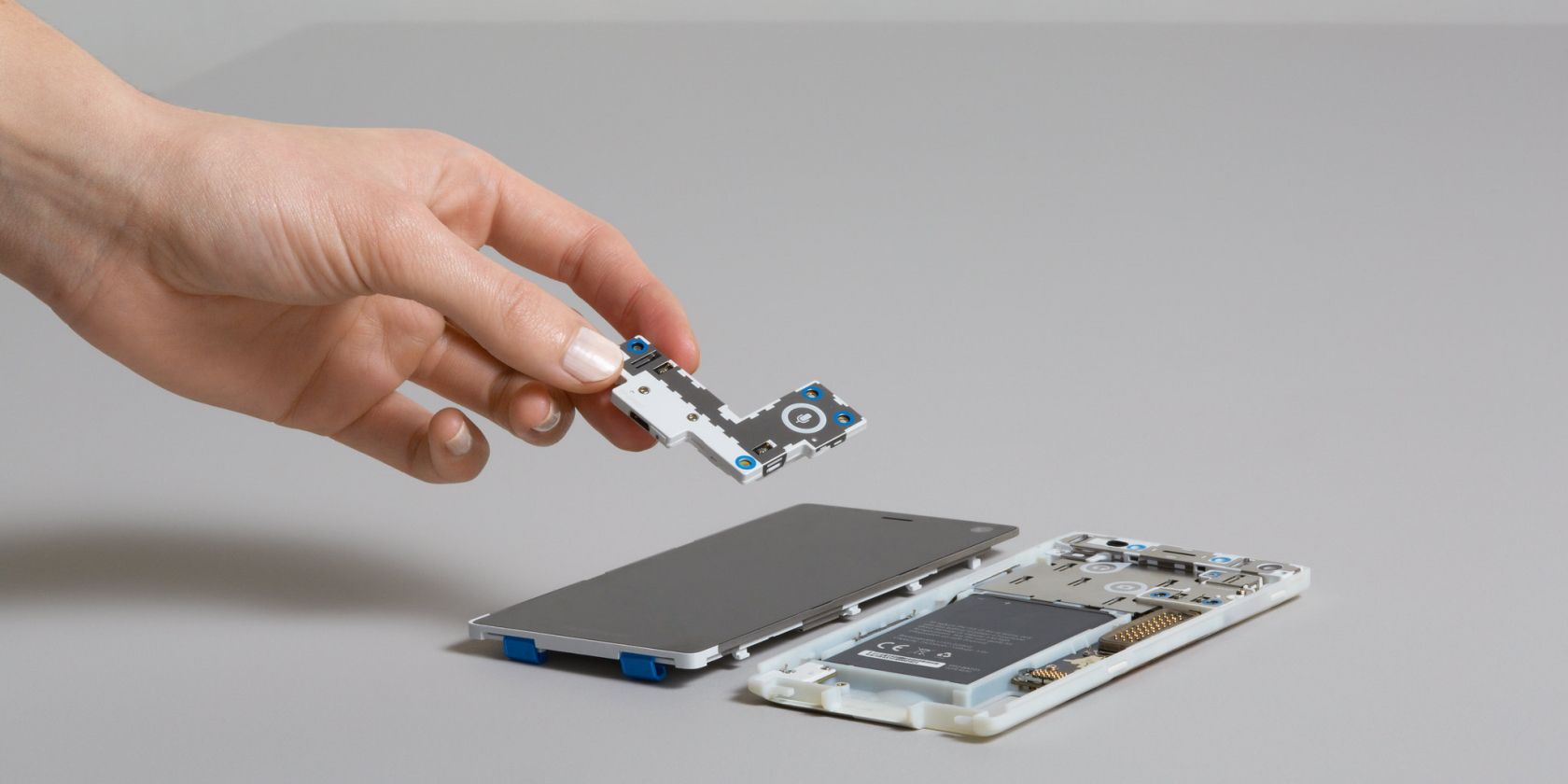Every year, discarded phones create literal tons of electronic waste. Modular phones offer a cheaper, greener solution.
Modular phones are the easiest type of smartphone to repair and upgrade. You can open them up to replace a part without hurting the rest of the device or voiding your warranty. The idea is that you can do your own maintenance, and your phone will last longer. But swappable parts aren’t the only difference you’ll notice.
So, what is a modular phone, and how do they work?
Modular vs. Semi-Modular
Truly modular phones are easy to open up and take apart. This lets you remove a part to swap in a new one without any special tools. The Fairphone 3 and 3+ from Fairphone and the Shift6M from SHIFT only need the included screwdriver. Some parts clip in and out like LEGO pieces, and you can remove them with your fingers. Opening these phones doesn’t affect the warranty, either.
Some phones are only semi-modular. That is, you can replace some parts, but not others. The Librem 5 from Purism has a semi-modular design that keeps the modem, Wi-Fi card, and battery separate and easy to replace. But Purism doesn’t currently offer replacements for other parts, like the display.
Another semi-modular form is to offer snap-on upgrades. Examples include the Doogee S95 Pro from Doogee and the slightly older Moto Z from Motorola. These phones get battery packs, speakers, and other enhancements that you can snap onto the phone’s back. You don’t even need to power down the phone, making these mods the easiest to install.
Semi-modular phones are still greener than mainstream models, but they don’t last as long as true modular phones. This is because the mods are more accessory than replacement. If a critical component fails, you’ll still have to pay for service fees and proprietary parts.
Electronic Waste Reduction
A great benefit to going modular is that your phone lasts longer. Remember, ”reduce, reuse, recycle” is in order of effectiveness, with recycling at the bottom. Modular phones allow you to reduce your waste output by discarding only a part when it’s time to repair or upgrade.
Lately, mainstream phone manufacturers are reducing their packaging and using recycled materials. But these efforts don’t do much in the big picture. The US throws away over 100 million phones a year, generating over 15 thousand tons of electronic waste. Recyclers simply can’t keep up.
Modular phones also have an ethical high ground when it comes to workers’ rights. To keep up with demand, a lot of smartphone factories are little more than sweatshops. By contrast, both SHIFT and Fairphone use ethical manufacturers. That is, the workers who create these phones enjoy fair wages, health and safety protections, and benefits.
Hardware Differences
You might find a modular phone a bit bulkier than you’re used to. This is because of the way they’re constructed. Ordinary phones often fuse parts for a more compact design. On the other hand, modular phones use slightly more space since parts are separated for easy access and removal.
Because the phone must be easy to open, modular phones are not usually waterproof or dustproof. But you can compensate with a sturdy case that completely encloses the phone. Fairphone and SHIFT both include a cover in the box.
The best thing about modular phone hardware is that you aren’t stuck with it. Modular phones are upgradeable as well as repairable. You can easily order a bigger battery, sharper camera, or extra storage. This is not only a cost-saver, it lets you customize your experience from the beginning.
Software Differences
You won’t notice much difference in performance between a modular phone and a mid-range mainstream phone. The displays are crisp, hi-res, and lag-free, and the CPUs are speedy enough for all but extreme software needs.
There are two options for your operating system (OS). The Librem 5 uses Purism’s own PureOS operating system with guaranteed updates for the life of the phone. This is a new OS that focuses on data protection and privacy.
Meanwhile, the Moto Z, Fairphone 3 and 3+, and Shift6M all run Android. How long these will receive Android updates depends on the device. But you can still use ROMs and other software to stay up-to-date.
As more modular phones become available, we hope to see more OS options.
Cost Differences
A modular phone costs about the same as its mid-range equivalent, but you save over time because it lasts longer. While you can repair mainstream phones, you’re often forced to go through the manufacturer to do so. Modular parts are less expensive, and you can install them yourself, saving time and service fees.
Truly modular phones are only sold in Europe right now, so US shoppers will have to buy unlocked versions online and pay shipping fees. But for a bargain hunter, that’s nothing new. Besides, international shipping options are more accessible than ever before.
The biggest cost saving isn’t up-front though, it’s in the improved lifetime. Mainstream phones may be repairable, but you can’t trade your iPhone’s camera out for a better one when it becomes available. With a modular phone, you can stay current without needing a whole new device.
The Verdict: Modular vs. Mainstream Smartphones
With a modular phone, you can enjoy financial savings while reducing waste. Best of all, you won’t have to sacrifice functionality to do so. They compete closely with the software and hardware of mid-range mainstream models, and they last far longer.
Whether you go for a true modular experience or try a semi-modular option, you’ll still come out ahead. Modular is, hands-down, the most eco-friendly and sustainable kind of phone.
Image Credit: Fairphone/Flickr
About The Author

